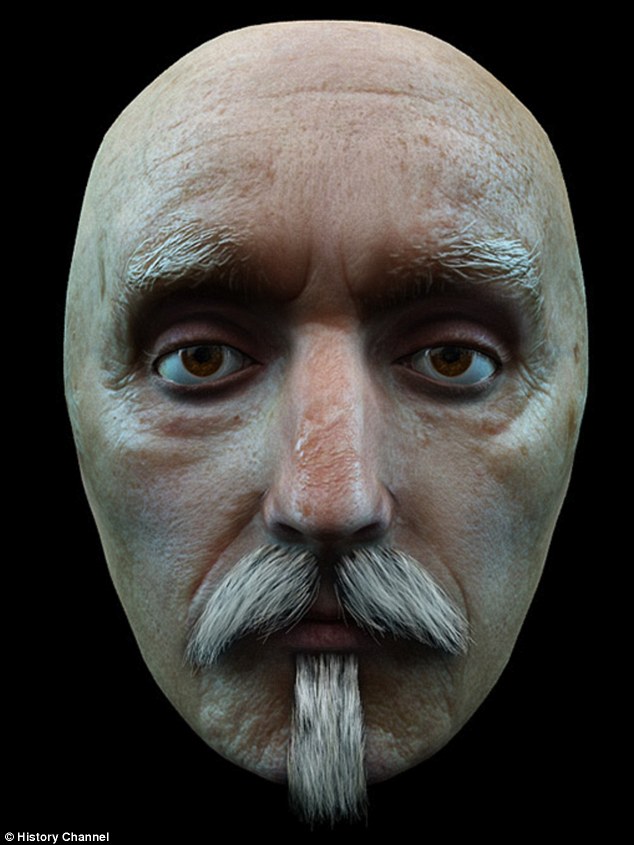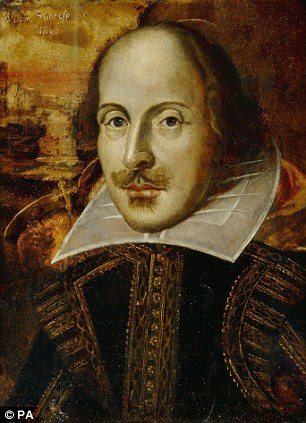It was Oliver Cromwell who coined the phrase "warts and all". England's Lord Protector had warts on his face and early portraits of him depict him in a flattering light, without the warts. That was until Cromwell told a painter to paint him with as much accuracy as possible, "warts and all."
Now scientists have used computer technology to create what they claim is a warts and all image of William Shakespeare.
The image is to appear in a new History Channel TV documentary called Death Masks on 13th September.
And the team which created the supposed likeness of the Bard has also created supposed likenesses of George Washington, Napoleon Bonaparte, Julius Caesar and Abraham Lincoln. The supposed death mask of Shakespeare was found in Germany in the 1840s.
Shakespeare was born on 23rd April (St George's Day, England's national day) 1564 and died, also on 23rd April, in 1616.
3D or not 3D? Scientists recreate warts-and-all 'image' of Shakespeare... but have they got the right man?
By Nigel Blundell
5th September 2010
Daily Mail
Scientists have used state-of-the-art 3D computer technology to create what they say is the first true likeness of William Shakespeare.
The image shows every wrinkle on the playwright's face and the figure's haunted stare is radically different from existing images which purport to be of the Bard.
The warts-and-all image is featured in a TV documentary called Death Masks, due to be screened on the History Channel on September 13.

New perspective: How scientists believe William Shakespeare would look after using new technology
Director Stuart Clarke said: 'The results from this forensic examination are startling.
'They show strong evidence both forensically and historically that this 3D model may be, in fact, the way Shakespeare looked in life.
'Breakthroughs in computer imaging mean we may have to rewrite the history books on Shakespeare.'

Dramatically different: An historic portrait of the Bard
Clarke's team have also produced 3D likenesses of Napoleon, Julius Caesar, George Washington and Abraham Lincoln.
The recreations are based on scans taken from death masks - and in some cases masks made during life.
The producers of the show claim that the images will challenge viewers' perceptions of what some of history's most famous figures looked like.
The image of Napoleon is said to be significantly different from that which the French have become accustomed to, while the 'real' face of Washington is nothing like his image on the dollar bill.
But the recreation of Shakespeare is likely to cause the most controversy. The Bard's true likeness has been the subject of speculation for centuries and many experts dispute that the death mask used in the programme is Shakespeare's.
It was found in Darmstadt, Germany, in the 1840s and German scientists linked it to Shakespeare after carrying out a series of tests.
They say it proves the writer suffered from cancer towards the end of his life.

Shakespeare's birthplace: Stratford-Upon-Avon, Warwickshire
Forensic anthropologist Dr Caroline Wilkinson insisted there were 'a large number of consistencies' between the 3D image and portraits of the writer.
But Shakespeare Birthplace Trust chairman Stanley Welles rejects the validity of the new image and the death mask, adding: 'Shakespeare was not a national figure at the time, not in the way he is today, and it is unlikely a mask like this would have been made.'
dailymail.co.uk
Now scientists have used computer technology to create what they claim is a warts and all image of William Shakespeare.
The image is to appear in a new History Channel TV documentary called Death Masks on 13th September.
And the team which created the supposed likeness of the Bard has also created supposed likenesses of George Washington, Napoleon Bonaparte, Julius Caesar and Abraham Lincoln. The supposed death mask of Shakespeare was found in Germany in the 1840s.
Shakespeare was born on 23rd April (St George's Day, England's national day) 1564 and died, also on 23rd April, in 1616.
3D or not 3D? Scientists recreate warts-and-all 'image' of Shakespeare... but have they got the right man?
By Nigel Blundell
5th September 2010
Daily Mail
Scientists have used state-of-the-art 3D computer technology to create what they say is the first true likeness of William Shakespeare.
The image shows every wrinkle on the playwright's face and the figure's haunted stare is radically different from existing images which purport to be of the Bard.
The warts-and-all image is featured in a TV documentary called Death Masks, due to be screened on the History Channel on September 13.

New perspective: How scientists believe William Shakespeare would look after using new technology
Director Stuart Clarke said: 'The results from this forensic examination are startling.
'They show strong evidence both forensically and historically that this 3D model may be, in fact, the way Shakespeare looked in life.
'Breakthroughs in computer imaging mean we may have to rewrite the history books on Shakespeare.'

Dramatically different: An historic portrait of the Bard
Clarke's team have also produced 3D likenesses of Napoleon, Julius Caesar, George Washington and Abraham Lincoln.
The recreations are based on scans taken from death masks - and in some cases masks made during life.
The producers of the show claim that the images will challenge viewers' perceptions of what some of history's most famous figures looked like.
The image of Napoleon is said to be significantly different from that which the French have become accustomed to, while the 'real' face of Washington is nothing like his image on the dollar bill.
But the recreation of Shakespeare is likely to cause the most controversy. The Bard's true likeness has been the subject of speculation for centuries and many experts dispute that the death mask used in the programme is Shakespeare's.
It was found in Darmstadt, Germany, in the 1840s and German scientists linked it to Shakespeare after carrying out a series of tests.
They say it proves the writer suffered from cancer towards the end of his life.

Shakespeare's birthplace: Stratford-Upon-Avon, Warwickshire
Forensic anthropologist Dr Caroline Wilkinson insisted there were 'a large number of consistencies' between the 3D image and portraits of the writer.
But Shakespeare Birthplace Trust chairman Stanley Welles rejects the validity of the new image and the death mask, adding: 'Shakespeare was not a national figure at the time, not in the way he is today, and it is unlikely a mask like this would have been made.'
dailymail.co.uk
Last edited: